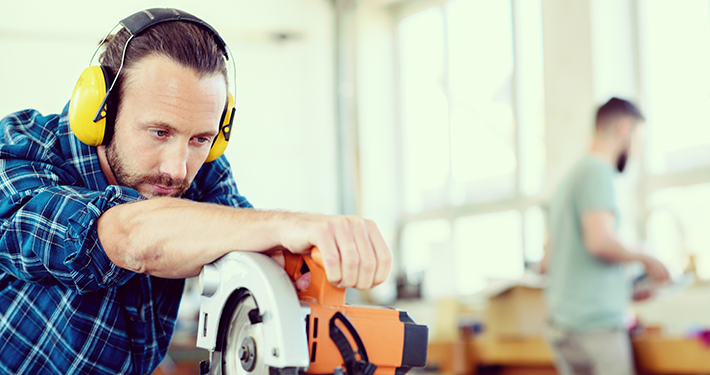About
About the Alliance
News and Events
Membership
Membership Types
Member Highlights
Services
Safety Assessments + Consultations
Advisor Services
Leadership and Psychological Safety Services
Training
CATALOG AND UPCOMING CLASSES
Resources
By Type
OHS Competency Tools and Framework
COR / OSSE
Getting Certified
Certification Tools & Training
Recognition & Awards
Navigation
Member Highlights:
Safety Assessments + Consultations: Air Quality Assessment, Combustible Dust Assessment, Confined Spaces Assessment, Critical Incident Response Services, Ergonomics, Machine Safeguarding Assessment, Noise Hazards | Surveys and Testing Services
Advisor Services: Safety Needs Analysis | GAP Analysis, Safety Program Support (SPS) | Safety Compliance Support (SCS)
Leadership and Psychological Safety Services: Mental Health and Wellness at Work, Leadership Training and Coaching, Respectful Workplace Support
By Type: Checklists, Guidebooks, Presentations, Quick Reference Cards, Safety Awareness Posters, Safety Videos, Templates, Toolbox Talks, Webinars
OHS Competency Tools and Framework:
Getting Certified: Steps to OSSE Certification, COR for Small Business, Safety Needs Analysis | GAP Analysis, COR / OSSE Small Business Referral Program, Certified OSSE/COR External Auditors
Certification Tools & Training: OSSE/COR Audit Tools, OSSE/COR Reference Materials, Certified OSSE External Auditor Training, OSSE/COR Internal Auditor Training
12
Months
of Safety
of Safety
April 2025
Personal Protective Equipment (PPE)
Personal protective equipment (PPE) is the gear that your workers need to help protect them from specific hazards in your workplace. PPE can include hard hats, safety glasses, respiratory protection, hearing protection, fall protection, gloves, safety glasses, and safety boots.
If you have reviewed the risks in your workplace and determined that other measures may be ineffectual or impractical to control certain hazards, PPE may be required. PPE can be used on its own, or in addition to other risk mitigation activities.
It is important to include a PPE program as part of your occupational health and safety program. This program should include:
- Risk assessment and recommendation of controls
- Education and training of workers on the appropriate use of PPE
- Selection, use, maintenance, and storage of PPE.
Personal Protective Equipment (PPE)Health and Safety Resources and Tools
Toolbox Talk
Safety eyewear and face shields are the most common method used in industry to protect the eyes and face from injury. Safety eyewear is an essential piece of personal protective equipment (PPE), but all too often workers wear the wrong kind or even worse don’t wear it at all.
Toolbox Talk
Hands are essential for work, yet hand injuries are one of the most common injuries in the workplace. Hands are injured by dull cutting tools, jagged edges, and sharp objects. Most hand injuries are preventable. Injuries happen when workers are rushed, not wearing PPE, using equipment without guarding, or poor supervision and training.
CSA Group Research - Canadian Women's Experiences with Personal Protective Equipment in the Workplace
Poster
Hands are essential for work, yet hand injuries are one of the most common injuries in the workplace. Hands are injured by dull cutting tools, jagged edges, and sharp objects. Most hand injuries are preventable. Injuries happen when workers are rushed, not wearing PPE, using equipment without guarding, or poor supervision and training.
Toolbox Talk
“Noise” is unwanted sound. The psychological effects of noise is that it can startle you, annoy you, and disrupt your concentration. Physiological effects include loss of hearing. Severe exposure to noise can cause pain and even nausea. Noise can also affect communications which interferes with both job performance and your safety.
Toolbox Talk
Hearing Protection Devices (HPD), also known as hearing protectors, are devices worn as a barrier to reduce sound levels entering the ears to diminish the harmful effects of sound. Examples of HPD can include earplugs and earmuffs. With each of these HPD, there is a large variety of examples to choose from.
Noise Hazards— Surveys and Testing Noise is one of the most common occupational health hazards. WorkSafeBC has established occupational exposure limits (OEL) to protect workers’ hearing as well as protect their mental health. An employer must ensure that a worker is not exposed to noise levels above 85 dBA Lex daily noise exposure level or […]
Presentation by Dorothy Wigmore at a CSA (COPE - Conference on Protective Equipment) conference.
Workers must wear a minimum of Class 1 high-visibility apparel if they work around vehicles or mobile equipment moving slower than 30 km/h. If workers are around vehicles moving faster than 30 km/h, they must wear Class 2 or 3 high-visibility apparel. This poster shows examples of what types of apparel must be worn and […]
News & Blog Articles
Hearing loss in the workplace IS preventable – Make hearing conservation an injury prevention strategy
March 10, 2022
In March, we recognize World Hearing Day (March 3) – an annual global advocacy event that calls for action to address hearing loss. Hearing loss is more common than you might think – an estimated 54 percent of Canadians, ages...
About MSABC
Board & Governance
Contact Us


